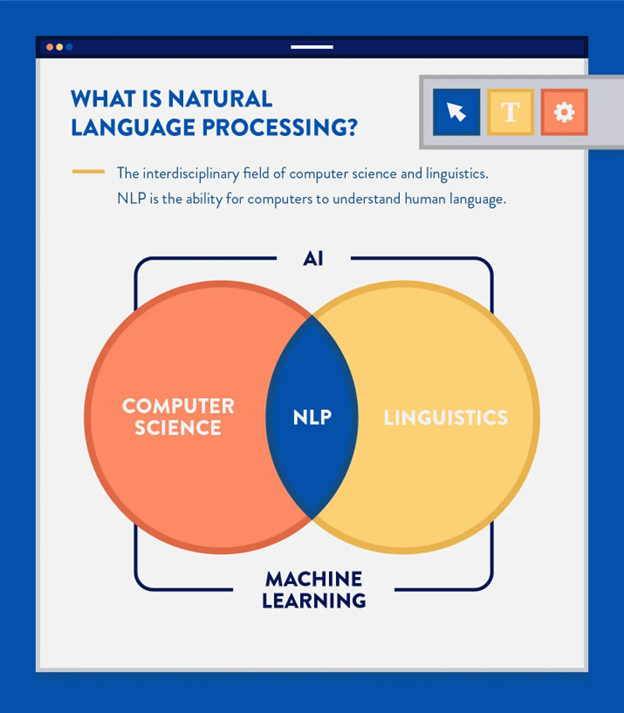SHARE

In today’s digital age, voice search has revolutionised how we interact with technology. People increasingly use voice commands to search for information, make appointments, and shop online. As a result, it has become essential for businesses and content creators to optimise their content for voice queries. In this article, we will explore the rise of voice search, its mechanics, the importance of optimisation, and strategies to measure success.
Understanding The Rise of Voice Search
Voice search has gained immense popularity in recent years, transforming how we access information. The shift from traditional text queries to voice commands is driven by convenience and the widespread adoption of smart speakers and virtual assistants. In today’s fast-paced world, convenience is key. People are constantly looking for ways to simplify their lives and save time. This is where voice search comes in. Users can simply speak their questions or commands instead of typing out a query on a keyboard.
It’s as easy as having a conversation with a virtual assistant. But how did we get here? The rise of voice search can be attributed to technological advancements, particularly the development of smart speakers and virtual assistants. These devices have become an integral part of our lives, providing a hands-free way to access information and control our surroundings.
The Shift From Text to Voice Queries
Unlike typing queries into search engines, voice search allows users to simply speak their questions or commands. This shift from text to voice has simplified and expedited the search process, enabling users to get instant results without physically typing on a keyboard. Imagine you’re in the kitchen, cooking up a storm. You suddenly realise you’re out of a key ingredient. Instead of stopping what you’re doing, washing your hands, and typing a query on your computer or phone, you can simply ask your virtual assistant to add it to your shopping list. It’s a seamless experience that saves you time and effort.
Moreover, voice search is particularly useful in situations where typing is not practical or safe. For example, it’s much safer to use voice commands to search for directions or make a phone call when driving. This hands-free approach allows users to stay focused on the road while accessing the necessary information.
The Impact of Smart Speakers and Virtual Assistants
Smart speakers and virtual assistants such as Amazon Echo, Google Assistant, and Apple Siri have significantly popularised voice search. These devices respond to voice commands, giving users quick answers to their queries, weather updates, and even controlling smart home devices. Their increasing presence in households has fueled the demand for voice-optimised content. Imagine waking up in the morning and asking your virtual assistant for the weather forecast. Within seconds, you have all the necessary information to plan your day. Or picture yourself relaxing on the couch, wanting to change the lighting in your living room. With a simple voice command, your smart speaker adjusts the lights to create the perfect ambience.
Smart speakers and virtual assistants have become more than just gadgets – they have become our assistants. They can set reminders, call, play music, and even order groceries. The possibilities are endless, and as these devices become more sophisticated, so does our reliance on them. As voice search continues to evolve, businesses and content creators are adapting to this new way of accessing information. They are optimising their websites and content to be voice-friendly, ensuring they can provide users with the answers they need, even when not in front of a screen. The rise of voice search has revolutionised how we interact with technology. It has made accessing information faster, easier, and more convenient. With the increasing popularity of smart speakers and virtual assistants, voice search is here to stay. So the next time you need an answer, just ask – your virtual assistant is always ready to help.
The Mechanics of Voice Search

To understand how voice search works, we must delve into its mechanics. When it comes to voice recognition technology, there is much more behind the scenes than meets the eye. It utilises complex algorithms to convert spoken words into written text. This involves analysing patterns, frequencies, and contextual information to accurately interpret the voice commands and queries.
Imagine you’re sitting in your living room, wondering about the weather outside. Instead of reaching for your phone and typing in a search query, you simply say, “Hey, what’s the weather like today?” And just like magic, your virtual assistant responds to current weather conditions. But have you ever wondered how your virtual assistant understands and interprets your voice commands so accurately? That’s where natural language processing (NLP) comes into play.
How Voice Recognition Technology Works
As mentioned earlier, voice recognition technology utilises complex algorithms to convert spoken words into written text. But how does it do that? When you speak into your device, a microphone first captures the audio. This audio is then processed by the voice recognition system, which breaks it down into smaller, more manageable chunks. These chunks are known as phonemes, the basic sound units in a language.
Once the audio has been broken down into phonemes, the voice recognition system compares these phonemes to a vast database of known words and phrases. It analyses the patterns, frequencies, and contextual information to determine the most likely words or phrases spoken. But it doesn’t stop there. The voice recognition system also takes into account the surrounding words and phrases to further refine its understanding of the spoken command or query. This contextual information helps the system provide more accurate and relevant responses.
The Role of Natural Language Processing in Voice Search

Now that we understand how voice recognition technology works, let’s explore the role of natural language processing (NLP) in voice search. Natural Language Processing (NLP) is a branch of artificial intelligence that focuses on enabling computers to understand and interpret human language. In the context of voice search, NLP algorithms analyse the context, intent, and meaning behind the words used in voice commands.
Think about it this way: when you ask your virtual assistant for the nearest coffee shop, you don’t have to specify the exact address or name. You can simply say, “Hey, where’s the nearest coffee shop?” And your virtual assistant will understand what you mean.
This is where NLP comes in. It enables voice recognition systems to understand the intent behind your voice command, even if it’s not explicitly stated. NLP algorithms analyse the context, words, and speech patterns to determine what you’re looking for. So, the next time you ask your virtual assistant a question, remember that a lot is happening behind the scenes. Voice recognition technology and natural language processing work together to ensure your voice commands are accurately understood and interpreted, providing you with the necessary information.
The Importance of Optimising Content for Voice Search
As the prevalence of voice search grows, businesses and content creators need to optimise their content accordingly.
The Difference Between Voice and Text Queries
Voice queries tend to be longer and more conversational compared to typed queries. For example, when typing, a user might search for “best coffee shops in London,” whereas in voice search, they might ask, “What are the best coffee shops in London?” Understanding this distinction is crucial when crafting voice-optimised content.
The Impact of Voice Search on SEO
Voice search has a transformative effect on Search Engine Optimisation (SEO). Businesses that fail to adapt risk losing visibility and traffic. Optimising content for voice search involves tailoring keywords, creating user-friendly content, and considering the user’s intent when formulating answers.
Strategies for Voice Search Optimisation
Now that we understand the importance of voice search optimisation let’s explore some strategies to improve your content’s visibility.
Incorporating Long-Tail Keywords into Your Content
Long-tail keywords are phrases that more closely resemble natural language queries. Integrating these phrases into your content makes it more likely to rank highly in voice search results, as they align with the conversational nature of voice queries.
The Importance of Local SEO in Voice Search
Voice search is highly relevant for local businesses. Optimising your content with local keywords and ensuring your business information is up-to-date will increase the chances of being featured in voice search results for local queries.
Measuring the Success of Your Voice Search Strategy
It is crucial to track key metrics to determine the effectiveness of your voice search optimisation efforts.
Key Metrics to Track in Voice Search
Some key metrics to monitor include the percentage of voice traffic, the average position in voice search results, and the click-through rate from voice search results. These insights will provide valuable feedback to refine your strategy further.
Tools for Monitoring Voice Search Performance
Several tools are available to assist in analysing and monitoring voice search performance. These tools enable you to track specific keywords, identify opportunities for improvement, and make data-driven decisions to enhance your voice search strategy. In conclusion, voice search is revolutionising the way we interact with technology. Businesses and content creators can stay ahead of the curve by understanding the rise of voice search, its mechanics, and the importance of optimising content. Implementing strategies for voice search optimisation and utilising tools for performance monitoring will ensure that your content is tailored to the spoken query, enhancing its visibility in the ever-evolving digital landscape.
Frequently Asked Questions About Voice Search
What Is the Meaning of Voice Search?
Voice search is a technology that allows the user to use a voice command to search on the Internet, a website or an application. As a result of advances in speech recognition, this feature first appeared on smartphones, making it possible to replace the search bar.
What Is the Difference Between Voice Search and Google?
When using voice search as opposed to Google search, the primary point of difference is the types of queries we’re asking. Voice search is usually long-form questions, as opposed to the traditional one or two-word topic searches we ask Google.
How Can Voice Search Benefit Your SEO?
Essentially, voice search requires you to optimise your SEO plan to focus on how users verbally search, what phrases or keywords they use, and what information they want to find.
What Are the Benefits of Voice Search?
Voice search considerably speeds up the searching process. The voice search feature provides quick and prompt answers to most of the customers’ questions. As per one of the research, voice searching is faster by 3.7 times than your average typing speed.
How Does Voice Search Impact SEO and Content Strategy?
- Changes in search behaviour.
- Long-tail keywords.
- Local SEO and “Near Me” searches.
- User intent and context.
- Structured data markup.
- Google SGE and AI results.
- Mobile optimisation.
- Multimedia content.







